Exploring Interior Design Services in Dubai
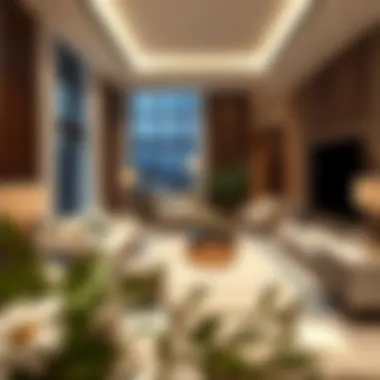
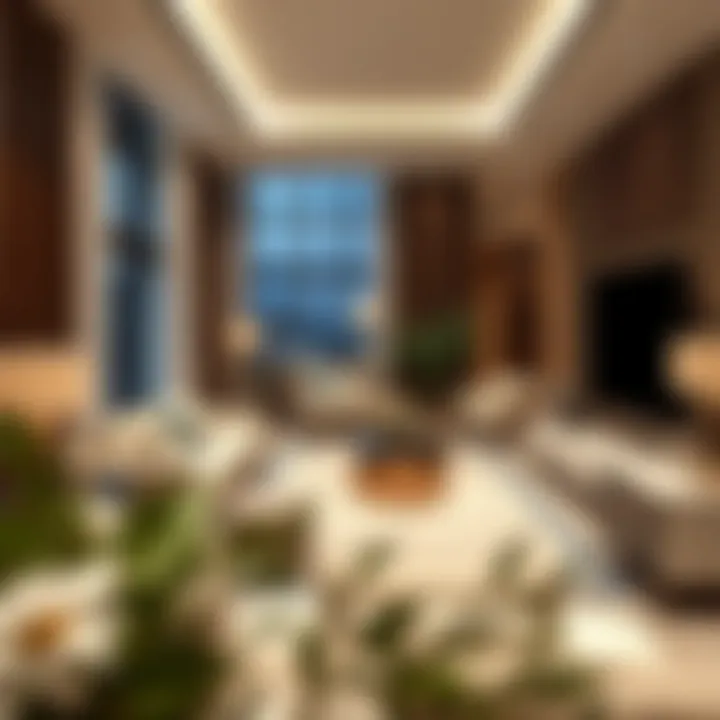
Intro
When it comes to interior design in Dubai, one can’t ignore the distinctive flair that pervades its lavish surroundings. Beauty meets functionality in a city that redefines modernity while honoring its rich heritage. The demand for interior design services here isn't just a trend – it’s an ever-growing necessity shaped by cultural nuances and diverse lifestyles. This article unfolds the intricate layers of interior design in Dubai, providing insights through various lenses, from local trends to investment strategies, thus catering to investors, buyers, expatriates, and developers.
As we traverse through the myriad of styles and influences that make up the décor in this bustling metropolis, it’s essential to recognize that the choices we make in design not only reflect our personal tastes but also speak volumes about the environment and culture we live in. The interplay between various design philosophies and the luxurious aesthetics of Dubai's skyline creates opportunities and challenges that require keen awareness and understanding.
In the sections to follow, we will dissect crucial aspects that define the local market, delve into emerging trends, and analyze the pricing landscape. By examining the role of culture and the increasingly diversified market, this exploration aims to arm you with knowledge, whether you’re seeking a dream home or have plans to invest in properties laden with design potential. Collectively, these insights will guide savvy decision-making that can enhance your experience in one of the world’s most dynamic marketplaces.
Understanding Interior Design in Dubai
When it comes to the ever-evolving world of interior design, Dubai stands as a vibrant tapestry interwoven with global aesthetics and a rich cultural palette. Understanding the nuances of interior design in this bustling metropolis not only sheds light on the architectural elegance but also helps various stakeholders, from investors to expatriates, navigate an intricate market. This article will delve into the constituents that shape the interior design landscape in Dubai, focusing specifically on its multifaceted nature, relevance in real estate, and the cultural currents that influence local tastes.
Definition of Interior Design
Interior design refers to the art and science of enhancing the interiors of a space to achieve a healthier and aesthetically pleasing environment. It encompasses a variety of elements including space planning, furniture layout, color schemes, lighting, and furniture selection. More than just decoration, it involves a holistic approach that considers the needs and lifestyle of the inhabitants.
In Dubai, interior design is influenced heavily by both traditional and contemporary styles, making the definition quite dynamic. Designs can range from lavish opulence often found in luxury residential spaces to sleek minimalism in a corporate setting. The local market thrives on creativity and innovation, pushing boundaries while respecting the region's heritage.
The Importance of Interior Design in Real Estate
In a city characterized by its soaring skyscrapers and upscale living, the significance of interior design in real estate cannot be overstated. A well-executed interior design strategy increases property value, making homes more appealing to potential buyers or tenants. In a competitive market like Dubai’s, where aesthetics are paramount, the first impression can make or break a sale.
Moreover, effective interior design can lead to better functionality. For instance, thoughtful layout planning can maximize living space in a compact apartment, something that is extremely valuable in an urban environment like Dubai.
Given the influx of expatriates and tourists, designers often work closely with clients to balance personal preference with market trends, ensuring properties reflect both individual tastes and community norms.
"Interior design is not just about creating beautiful spaces; it's about enhancing the quality of life and culture of the occupants."
To summarize, understanding interior design in Dubai is a gateway to recognizing how cultural influences, market demands, and individual preferences converge to shape the city's architectural identity. By appreciating these aspects, stakeholders can make informed decisions that resonate with the modern spirit of Dubai.
Cultural Influences on Design
Understanding the cultural influences on interior design in Dubai is essential. The city reflects a blend of history, tradition, and modernity, creating a fascinating environment for design enthusiasts and investors alike. The cultural roots and historical context shape the aesthetic styles and functionality of spaces in this vibrant metropolis.
Historical Context of Architecture in Dubai
Dubai's architectural timeline is a rich tapestry woven with diverse influences. Initially, the structures in Dubai were functional, primarily crafted from local materials, with designs inspired by the harsh desert climate. The early buildings were simple — often made of coral stone and palm fronds — serving as homes for fishermen and traders.
Now, as globalization took hold, the skyline transformed dramatically. Influences from both East and West have trickled in, resulting in a unique architectural language that speaks volumes about the city's evolution. You can see hints of Islamic architecture blended with contemporary styles.
Prominent examples include the Al Fahidi Historical Neighborhood, where narrow lanes and wind-tower architecture give a glimpse into Dubai's past, while developments like the Burj Khalifa showcase an iconic blend of cutting-edge design and engineering prowess. This contrast highlights how past influences have paved the way for the present and future of interior design in this city.
Modern Influences and Trends
As we fast-forward to the present, several key trends have emerged, shaped by both technological advancements and societal shifts. Sustainability has taken center stage, with designers increasingly prioritizing green solutions. Natural materials and energy-efficient systems are not just buzzwords; they’re becoming standard practice in modern interiors.
Moreover, there’s a strong push towards incorporating smart home technologies. Imagine controlling your lighting, temperature, and even security through an app on your phone. This integration of technology and design offers a lifestyle that’s not only luxurious but also extremely convenient.
Another noticeable trend in Dubai’s interior design landscape is the preference for maximalism over minimalism. Unlike some urban settings that favor simplicity, many local designs celebrate opulence, showcasing rich textures, bold patterns, and vibrant colors. This cultural inclination reflects the lifestyle of many expatriates and affluent residents who revel in the extravagant.
“Dubai does not merely follow global design trends but rather curates them, showcasing a unique identity that is distinctly its own.”
In summary, cultural influences significantly shape the design landscape in Dubai. From historical roots that define the city’s early aesthetics to modern trends that merge tradition with technology, the interplay of various elements creates spaces that are both functional and captivating. For investors, buyers, and developers looking to operate in Dubai, understanding these cultural nuances is not just beneficial; it’s essential for success in this ever-changing market.
For further exploration on UAE architecture, visit Wikipedia on Dubai Architecture.
Key Interior Design Services Offered
In the vibrant landscape of Dubai, the demand for professional interior design services is ever-growing. This chapter aims to shed light on the various segments of the interior design market, showcasing how each service plays a crucial role in transforming spaces into functional and aesthetically pleasing environments. The unique blend of cultural influences, modern needs, and architectural styles ensures that these services not only cater to diverse clientele but also enrich the local real estate market in substantial ways.
Residential Interior Design
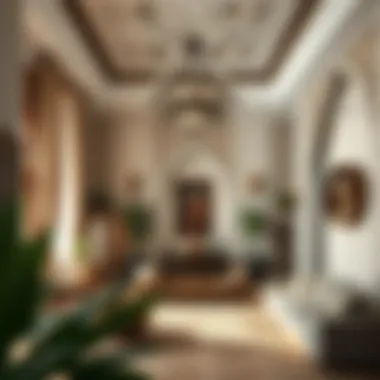
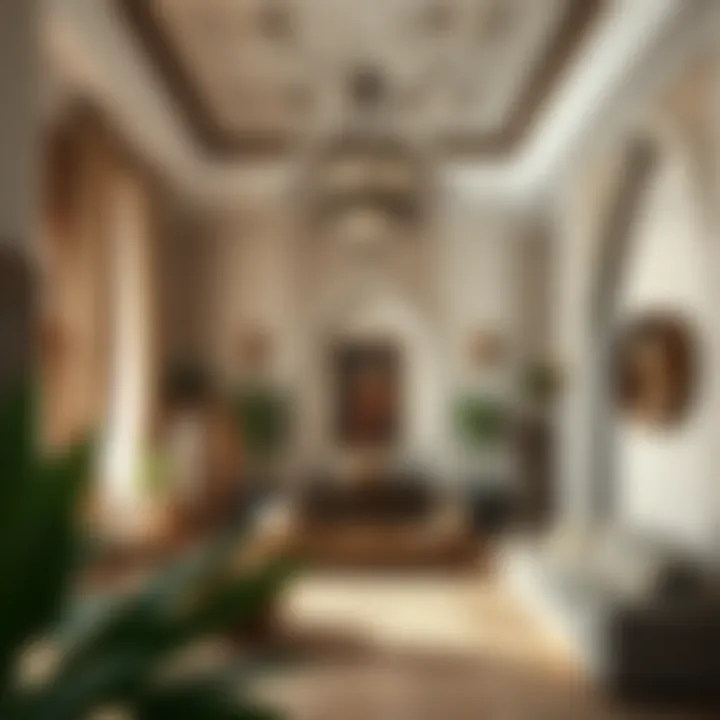
Residential interior design in Dubai is more than just arranging furniture or selecting color palettes. It involves creating spaces that resonate with the homeowner's personality while also reflecting the cultural nuances of the region. Whether it’s a luxury villa in Dubai Hills or a modern apartment in Downtown Dubai, the emphasis is on comfort and livability.
Every home is a canvas, and residential designers often start by understanding the lifestyles and preferences of their clients. This approach helps in creating custom designs that are not just visually stunning but also practical. The incorporation of local materials and artisanship can add a unique flavor that mirrors the rich heritage of the UAE.
Here are some key considerations that come into play:
- Client Preferences: Personal tastes are paramount. Designers often conduct interviews or surveys to gauge what clients are envisioning.
- Space Utilization: Designers must maximize potential within often limiting spatial constraints, considering flow and functionality.
- Cultural Elements: Integrating local art and furnishings adds a layer of authenticity and connection to the place.
In essence, residential design services cater to the emotional and functional needs of the homeowner, ensuring that the end result is a dwelling that feels uniquely theirs.
Commercial Interior Design
Commercial interior design in Dubai serves a distinct purpose—creating environments that not only represent a brand's identity but also enhance the customer experience. Offices, hotels, and restaurants each demand tailored design strategies that reflect their operational goals.
For commercial spaces, designers often focus on:
- Brand Identity: Every design can become a powerful brand ambassador. Whether through color schemes or layout, the commercial space must echo the brand's essence.
- Functionality and Efficiency: Unlike residential spaces, commercial designs prioritize workflow and efficiency to ensure that the space is supportive of business operations.
- Customer Experience: In sectors like hospitality and retail, the design must delight and engage customers, impacting their perceptions of quality and service.
For example, a trendy café in the bustling streets of Jumeirah might choose an open layout with communal tables to foster a sense of community, while a high-end boutique in the Dubai Mall might opt for a sleek, modern design to convey luxury.
Turnkey Interior Solutions
Turnkey interior solutions present a convenient option for clients looking for a hassle-free experience. This service encompasses the entire design process from initial consultation through to the final touches, covering every aspect under one umbrella.
The benefits of opting for turnkey solutions include:
- Streamlined Process: Managing multiple vendors can be a nightmare. A single point of contact simplifies communication and project management.
- Time Efficiency: With clear timelines established, clients can expect timely delivery without the often complex scheduling conflicts of traditional methods.
- Quality Control: Having one firm handle the entire process means that cohesive quality standards can be maintained throughout.
In Dubai, where the pace of life is fast, turnkey solutions are particularly appealing to expatriates or busy professionals who do not have the time or inclination to navigate the complexities of design and procurement on their own.
Trends in Interior Design
The realm of interior design never stands still, especially in a vibrant city like Dubai. Keeping a finger on the pulse of current trends is not just an aesthetic choice; it’s about understanding the market's demands and providing solutions that resonate with the local populace. As urbanization continues to shape the skyline, designers are tasked with creating environments that reflect both innovation and tradition in the most harmonious way possible. Each trend, whether it be sustainable design, smart technologies, or the contrast between minimalism and maximalism, tells a story integral to the fabric of Dubai’s diverse community.
Sustainable Design Initiatives
Sustainability in design is no longer a buzzword; it’s a necessity that’s gaining traction in Dubai's interior design scene. Many designers now emphasize using sustainable materials and practices, which includes everything from renewable resources to energy-efficient solutions. The introduction of green roofs, solar panels, and recycled materials in residential and commercial spaces marks a significant shift in how spaces are conceived.
Investors often find that sustainable designs can lead to long-term cost savings, as eco-friendly materials tend to require less maintenance. Furthermore, with local regulations increasingly favoring sustainable practices, a commitment to eco-conscious design is likely to enhance property value.
- Key Components of Sustainable Interior Design:
- Use of recycled and upcycled materials
- Energy-efficient lighting and appliances
- Water-saving fixtures
- Incorporation of natural light
A prime example of this trend can be seen in the development of the Sustainable City, which is designed to promote eco-friendly living while showcasing sustainable architecture. This is a perfect illustration of how innovation and environmental consciousness can work hand-in-hand.
Smart Home Technologies
The advent of technology has led to the rise of smart home solutions, which are finding their way into the core of interior design. Smart homes offer convenience, security, and energy efficiency, catering to a tech-savvy clientele that values these features. Automated systems allow users to control lighting, temperature, and even security measures from their smartphones.
In Dubai’s competitive market, integrating smart technologies into interior design not only meets consumer demand but also enhances the overall living experience. Even simple installations, such as smart thermostats or lighting systems, can dramatically transform a home’s ambiance.
- Popular Smart Home Technologies:
- Automated lighting systems
- Smart thermostats (like Nest)
- Security cameras with mobile access
- Voice-activated assistants (such as Amazon Alexa)
These technologies are perfect for the modern citizen who seeks efficiency without compromising on style, aligning perfectly with Dubai’s forward-thinking ethos.
Minimalism vs. Maximalism
The debate between minimalism and maximalism can often provoke strong opinions in the design community. Minimalism, with its focus on simplicity and clean lines, has gained a strong following in Dubai. Spaces designed with minimalism in mind often create a sense of calm, employing neutral palettes and uncluttered areas that offer functionality without excess.


Conversely, maximalism embraces the idea of “more is more.” This trend encourages bold colors, patterns, and a rich tapestry of textures and elements. This style celebrates individuality and luxury, a fitting homage to Dubai's opulent surroundings. A well-composed maximalist space can showcase local culture through art and textiles, creating a vibrant environment that tells a unique story.
Ultimately, the choice between the two often comes down to personal preference, lifestyle, and intended functionality of the space. Both trends present viable paths for designers, allowing them to tailor their approach to meet the desires of the client, while contributing to the ever-evolving landscape of Dubai’s interior aesthetic.
"The essence of good design is staying relevant, adaptable, and responsive to the user’s needs. In Dubai, that means creatively marrying tradition with modernity, comfort with luxury, and simplicity with complexity."
By understanding these trends, investors, buyers, and developers can make informed decisions that not only enhance the aesthetic value of spaces but also ensure that they are in line with the expectations of today’s discerning buyer.
Selecting an Interior Designer
Choosing the right interior designer can feel like searching for a needle in a haystack, particularly in the bustling and diverse market of Dubai. It’s not merely about finding someone with a fancy title or a glitzy portfolio; it’s about forming a partnership that aligns with your vision, lifestyle, and budget. This section delves into the nuts and bolts of what to consider when selecting an interior designer in Dubai, highlighting specific elements that can make or break your project.
Evaluating Experience and Portfolio
When starting the hunt for an interior designer, the first step involves evaluating a candidate’s experience and portfolio. This isn’t just about their years in the industry, but also about the breadth and depth of their work. A seasoned designer will have tackled a variety of projects, whether it be trendy bachelor pads, expansive family homes, or chic office spaces. Here are some factors to consider:
- Variety of Styles: Look for designers who showcase a range of styles in their portfolios. A designer who excels at traditional Arabic homes might not be the best fit for a sleek modern space.
- Completed Projects: Ask for a list of completed projects similar to your vision. It helps to see how they translated concepts into reality and their ability to manage projects from start to finish.
- Client Testimonials: Refer to reviews or testimonials from previous clients. These can provide insights into their working style, timeliness, and how they handle challenges.
When you look at portfolios, it’s crucial to see beyond the beautiful images. Notice the design decisions made: color palettes, furniture choices, and overall functionality.
Understanding Client-Designer Chemistry
Once you shortlist a few candidates based on experience, the chemistry between you and the designer plays a pivotal role in ensuring a successful collaboration. You could say it’s like pairing wine with cheese; not every combination will yield the best results.
- Communication Style: Assess how well the designer listens to your needs and ideas. The right designer should not only have a strong vision but also be flexible enough to incorporate your thoughts while guiding you through the process.
- Problem-Solving Approach: A good designer thinks on their feet. Discuss past projects and any hurdles they faced. An effective designer should have a repertoire of strategies for overcoming challenges that arise during the design phases.
- Emotional Connection: It may sound abstract, but feeling at ease with your designer can drastically impact the process. The goal should be to create a space that resonates with you, not just another cookie-cutter design.
Challenges in the Dubai Interior Design Market
Navigating the interior design market in Dubai comes with its own set of hurdles. An astute understanding of these challenges is crucial for investors, buyers, agents, developers, and expatriates alike. Recognizing the local landscape helps stakeholders make informed decisions when embarking on their interior design journeys.
In a city renowned for its luxurious living spaces and innovative architectural feats, various factors play into the overall design execution, including regulatory frameworks and budget constraints. Let's delve into these critical elements, examining how they impact the interior design process in Dubai.
Regulatory Framework and Compliance
The regulatory environment in Dubai is multifaceted and can be at times perplexing. Authorities like the Dubai Municipality lay down stringent guidelines governing everything from building codes to design aesthetics. It’s imperative for designers to stay on their toes about these rules. One might think designing a room is about just style and creativity, but it’s really much deeper than that. Here, compliance isn't an afterthought; it's a foundational element.
In this region, various permits alone can make or break a project. Whether it's a residential marvel or a commercial hub, every space must adhere to specific safety and accessibility norms. Below are key aspects of the regulatory framework that impact interior design:
- Building Permissions: Securing the right approvals before starting any project is non-negotiable. Failing to do so can halt progress and escalate costs.
- Sustainability Requirements: Increasingly, projects need to comply with regulations aimed at promoting sustainability and energy efficiency. This often means incorporating specific materials and technologies.
- Cultural Considerations: Designing in Dubai means respecting local culture while balancing modernity—a delicate dance that requires know-how.
Given the complexities, working with seasoned local designers who understand the lay of the land can save headaches down the road. It's a situation where ignorance is not bliss; it's costly.
Budget Constraints and Economic Factors
Next up are budget constraints and economic factors that come into play. The Dubai real estate market can be like a roller coaster ride, marked by rapid changes and fluctuations. For clients and firms alike, developing a solid budget is paramount.
Considerations for budgeting effectively include:
- Cost of Materials: High-quality finishes and materials can skyrocket budgets, especially when sourcing from worldwide markets.
- Labor Costs: Skilled labor is available, but it comes at a premium price. Realizing the worth of quality craftsmanship early in the project helps keep plans realistic.
- Market Dynamics: Economic conditions influence demand and, in turn, pricing. When demand rises, costs can inflate very quickly. Keeping an eye on market trends might give insight into the best times to invest.
Additionally, unexpected costs can sink a project faster than you can say "interior design."
Of course, it is also crucial to consider the return on investment. For commercial ventures, will the design ultimately drive more clientele? For homeowners, does the layout facilitate a desirable lifestyle? Everyone enters the fray with different goals, and it's essential to clearly identify these right from the get-go.
"Investing in understanding the local market and its challenges is the cornerstone of successfully navigating Dubai’s interior design scene.”
Culmination
Understanding the regulatory frameworks and the intricate budget dynamics can mean the difference between a seamless renovation and a tangled web of complications. As Dubai continues to grow, being ahead of these challenges becomes an imperative for all involved in the interior design market. For those looking to leave their mark in this vibrant city, staying informed is worth its weight in gold.
The Future of Interior Design Services in Dubai
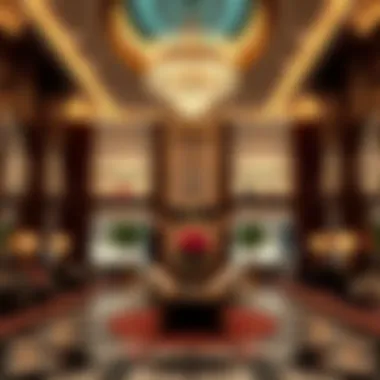
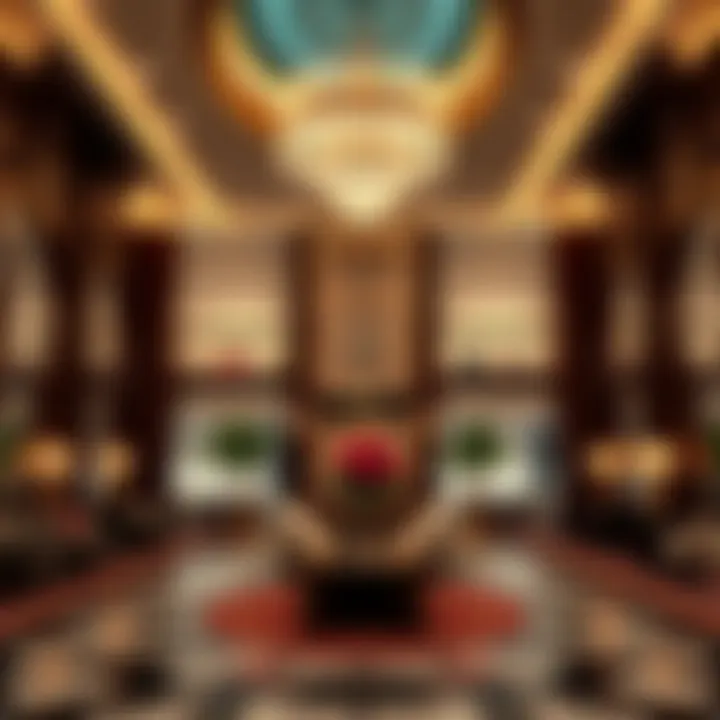
The future of interior design services in Dubai holds immense significance, considering the rapid evolution of the city's real estate market and the unique lifestyle demands of its inhabitants. With a multicultural populace and a wave of expatriates flooding in, there are fresh perspectives and tastes that constantly influence design direction. Essentially, the design scene in Dubai is not just about aesthetics; it’s about evolving functionality to meet the needs of a diverse group while also embracing sustainability and innovation.
In this section, we will delve into two major aspects:
Emerging Design Styles
Dubai’s future is embracing a shift towards eco-friendly design styles that encapsulate both luxury and responsibility. For instance, biophilic design is gaining traction, inviting nature indoors to create healthier living spaces. This involves using natural materials, bringing in greenery, and optimizing natural light, which resonates well with residents longing for a connection to the outdoors.
Another trend surfacing is the eclectic mix of tradition and modernity. Designers are blending local rejuvenated styles, influenced by Middle Eastern heritage, with sleek, contemporary lines. This fusion not only honors Dubai's rich history but also places it firmly within the context of modern design trends. Think vibrant colors, textured materials, and geometrical patterns that reflect local culture, yet appeal to global sensibilities.
Additionally, the resurgence of maximalism can be anticipated, particularly in luxury segments, where bold colors and layered textures create artful atmospheres reflecting individuality. Clients will desire interiors that showcase personal narratives, encouraging designers to push boundaries and create spaces that resonate with their unique styles and stories.
Impact of Globalization
Globalization is reshaping the interior design sector in Dubai significantly. With a melting pot of cultures, local designers are increasingly influenced by international trends while simultaneously putting their spin on them. This cross-pollination of ideas allows for an unparalleled dynamism; as concepts travel, they merge and adapt, resulting in unique designs that reflect both global and local nuances.
The impact of technology cannot be overlooked either. As designers integrate smart home technologies into their services, the expectation for cutting-edge automation within residential and commercial spaces will escalate. Clients will start demanding integrated solutions that not only enhance convenience but also promote sustainability, leveraging insights from innovations rooted in global practices.
The future of Dubai's interior design will see a harmonization of local craftsmanship with international standards, leading to a design landscape that is as functional as it is beautiful.
Moreover, sustainable sourcing and ethical practices will likely transform how materials are chosen. Designers will be more aware of their impact on the environment, with a focus on using sustainable, locally-sourced materials wherever possible. This conscientious approach will not only set Dubai apart but may also inspire other markets globally.
Case Studies of Successful Projects
The exploration of case studies in interior design serves as a crucial component in understanding the broader narrative of Dubai’s dynamic and diverse design landscape. These case studies are more than mere success stories; they exemplify innovative strategies, artistic vision, and the ability to meet specific client needs. By analyzing successful projects, one can uncover the unique challenges and triumphs faced by designers in a bustling metropolis known for its architectural marvels and diverse cultural influences.
Highlighting these projects offers insight into how design principles are practically applied. For investors, buyers, and developers, understanding these case studies is invaluable, providing a roadmap of proven tactics, aesthetic trends, and market movements that have consistently yielded positive results.
Residential Projects
Venturing into the realm of residential projects, one cannot overlook the spectacular transformation that a well-executed design brings to a space. The high-end residential units in Dubai, particularly those in areas like Palm Jumeirah or Downtown Dubai, serve as prime examples of how tailored interiors reflect both luxury and functionality.
One notable project involved a luxury villa on the sea-facing stretch of the Palm. Here, designers blended modern aesthetics with traditional Arabic elements, creating an inviting yet opulent atmosphere. The design utilized open floor plans, large windows for panoramic views, and intricate woodwork to reflect local craftsmanship. The outcome wasn’t just a stunning villa; it became a symbol of Dubai's unique identity in the global real estate market.
Moreover, incorporating smart home technologies into these residences, such as automated lighting and climate control, has become increasingly prominent, giving homeowners both luxury and convenience. Aspects like these resonate well with buyers, effectively appealing to a demographic that values both style and contemporary living.
This synergy between design and technology sets a benchmark for future residential projects, encouraging designers to think beyond aesthetics and consider the overall experience.
Commercial Ventures
When considering commercial ventures, one must recognize the role of interior design in shaping business environments. Take, for instance, the design of the Office Tower located in Dubai’s Business Bay. This project illustrates how an inviting yet professional environment can significantly impact employee productivity and corporate identity.
Designed with open spaces and collaborative areas, this office emphasizes both flexibility and style. Designers used acoustic panels to ensure sound insulation while incorporating vibrant colors to enhance creativity. The integration of greenery through indoor plants not only adds to the visual appeal but also improves air quality, providing an overall wholesome environment for workers.
These successful commercial designs often draw large firms looking to establish their presence in the competitive Dubai market. They signal to potential clients and employees that a business values sophistication and modernity, which, in turn, helps attract top talent.
Ultimately, the importance of case studies in interior design cannot be overstated. They not only serve as proof of concept but also play a vital role in guiding future trends and practices. By reflecting on past successes, industry players can better navigate the intricacies of design in Dubai, ensuring their projects are both relevant and resonant in a constantly evolving market.
The End
In this article, we have unravelled the intricate tapestry of interior design services in Dubai, shedding light on how this vibrant city’s aesthetic evolves in tandem with cultural nuances and economic shifts. Dubai's interior design landscape presents almost a fusion of contemporary trends and traditional influences, making it a fertile ground for creativity and innovation. The crux of this discussion emphasizes that understanding the local market's dynamics is not just beneficial but essential for anyone looking to invest in real estate or design projects here.
Reflecting on the Evolving Landscape of Interior Design
The evolution of interior design in Dubai has been nothing short of remarkable. The landscape has shifted dramatically, moving from opulent, extravagant structures to more minimalist yet functional spaces that reflect the needs of modern inhabitants. Investors and homeowners alike should take heed of the trends discussed throughout this article. The integration of sustainable practices and smart technology signifies a push towards a future that not only values aesthetics but also prioritizes environmental responsibility.
"As the city grows, so too do the aspirations and requirements of its diverse residents. Modern designs must cater to this intricate tapestry of cultures and lifestyles."
Each project encapsulates a journey of exploration and adaptation, making it clear that elevating the living experience has become a matter of priority among interior designers. As these professionals grapple with the intricacies of climate, culture, and consumer preferences, it’s critical for stakeholders to remain forward-thinking and adaptive.
Final Thoughts for Investors and Homeowners
For investors and homeowners, the insights gleaned from this comprehensive exploration serve as a road map to navigate Dubai’s multifaceted interior design scene. By appreciating the importance of cultural influences and recognizing the shifting trends towards collaborative spaces and eco-friendliness, they can make informed decisions that resonate well with the local market.
Moreover, engaging with experienced interior designers who understand these nuances can lead to successful outcomes—transforming spaces into reflections of personal and cultural values. It’s worth considering the impact of design not just on aesthetics, but on lifestyle and functionality as well. With Dubai’s ever-evolving narrative in real estate and design, remaining attuned to these changing tides is not just a luxury; it’s a necessity for anyone who wants to thrive in this booming market.
In summary, the call to action here is clear: embrace personalization in design, leverage the talents of skilled professionals, and consider the environmental footprint of your choices. This approach will not only enhance your living or working space but also contribute positively to the broader community.







